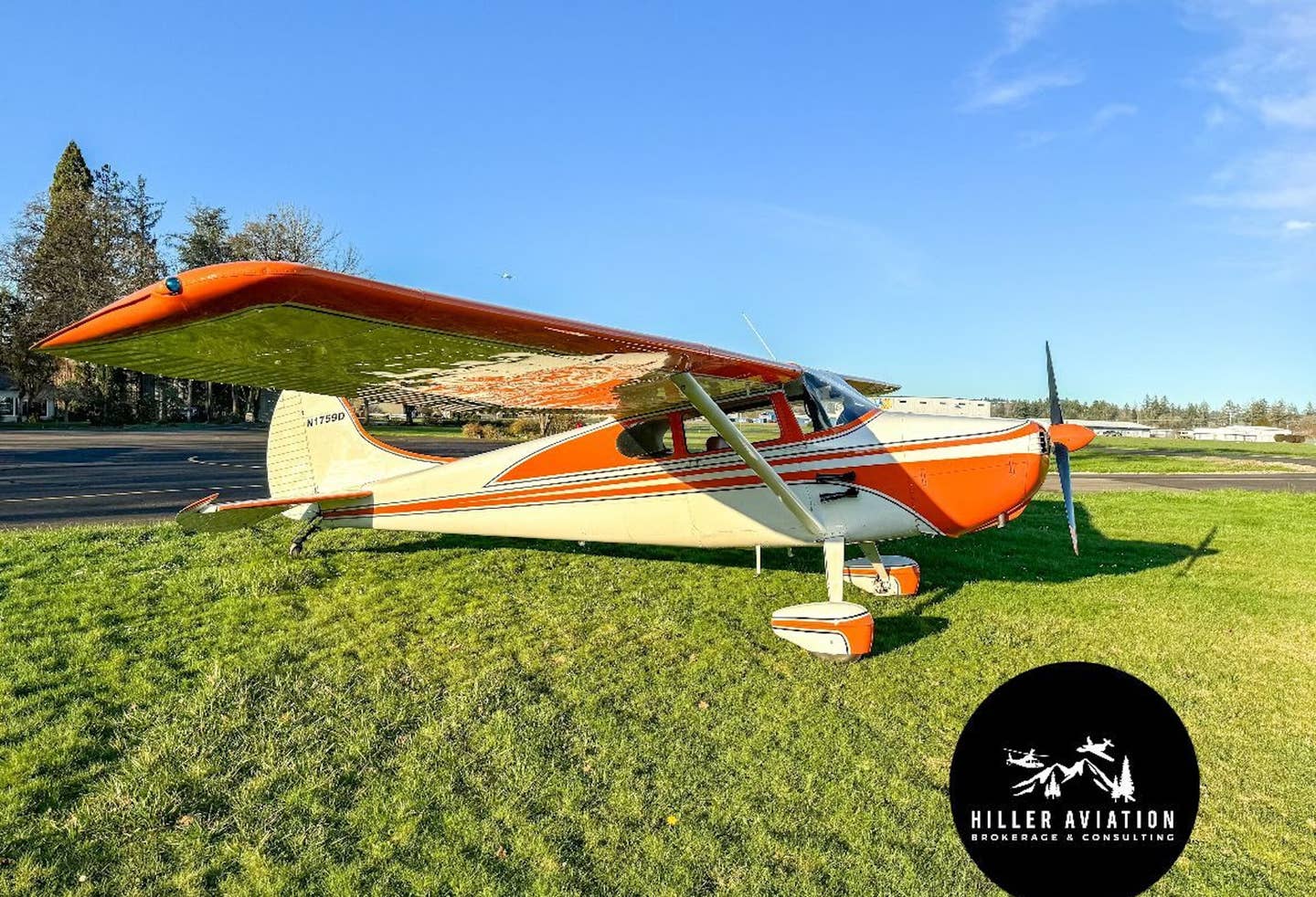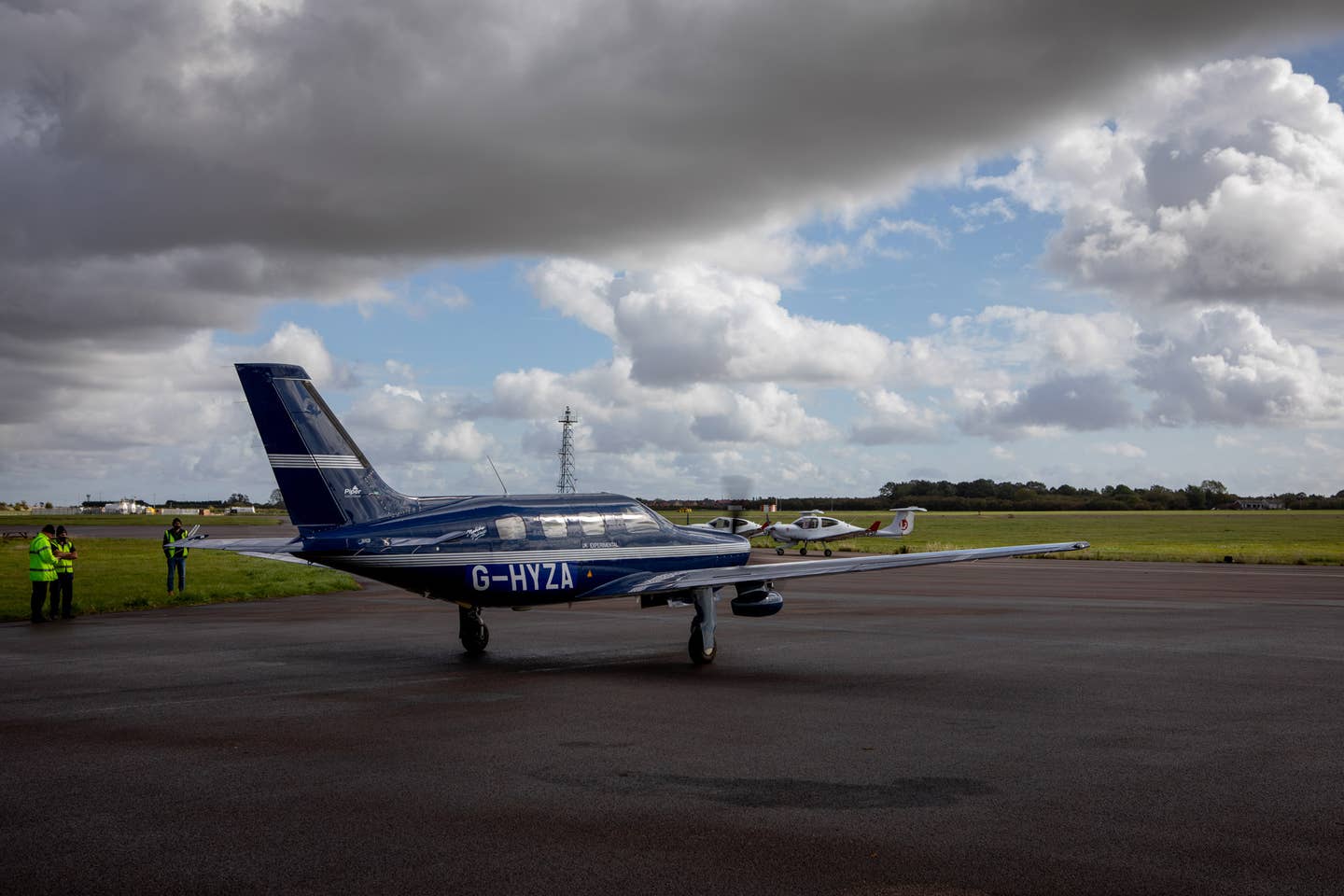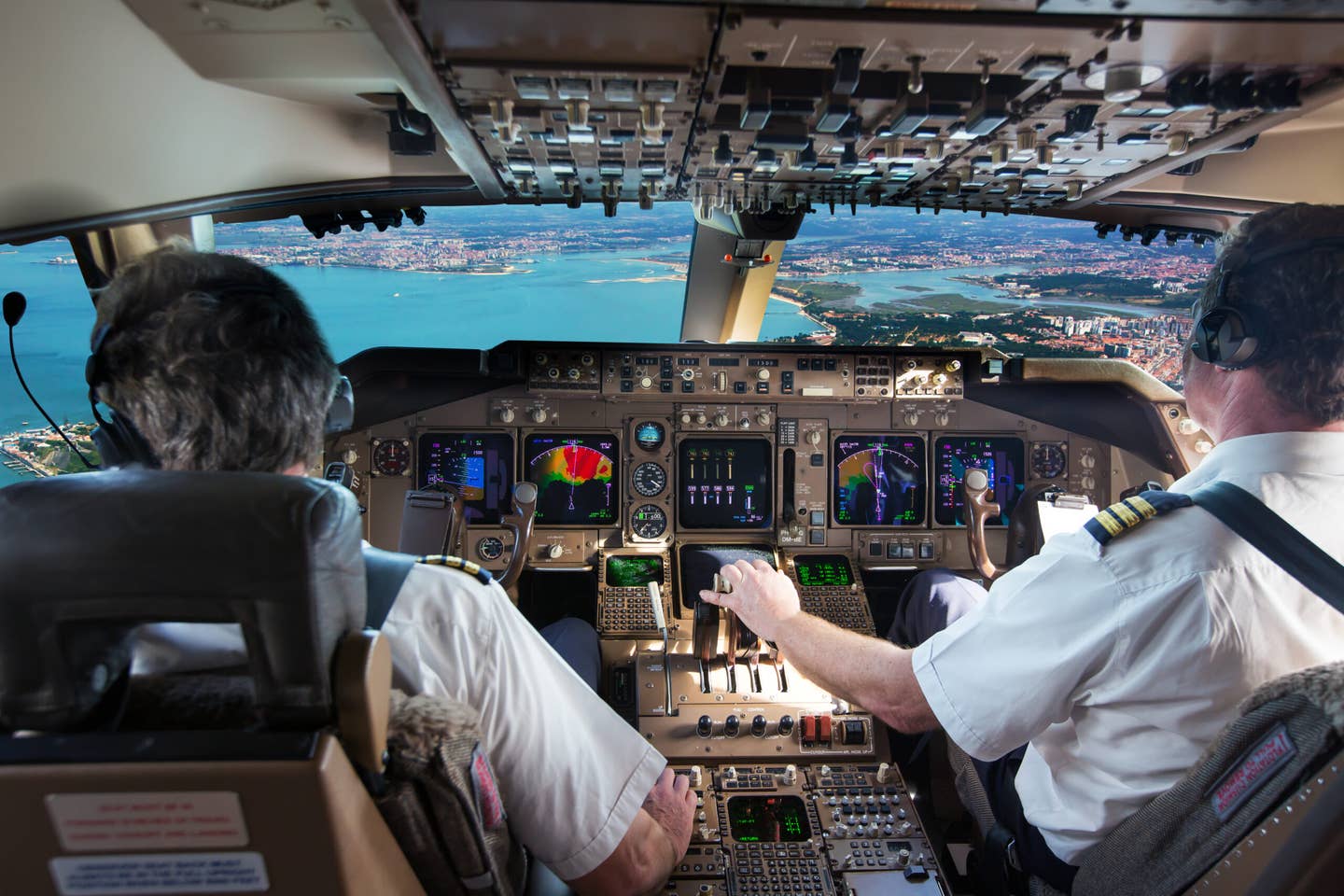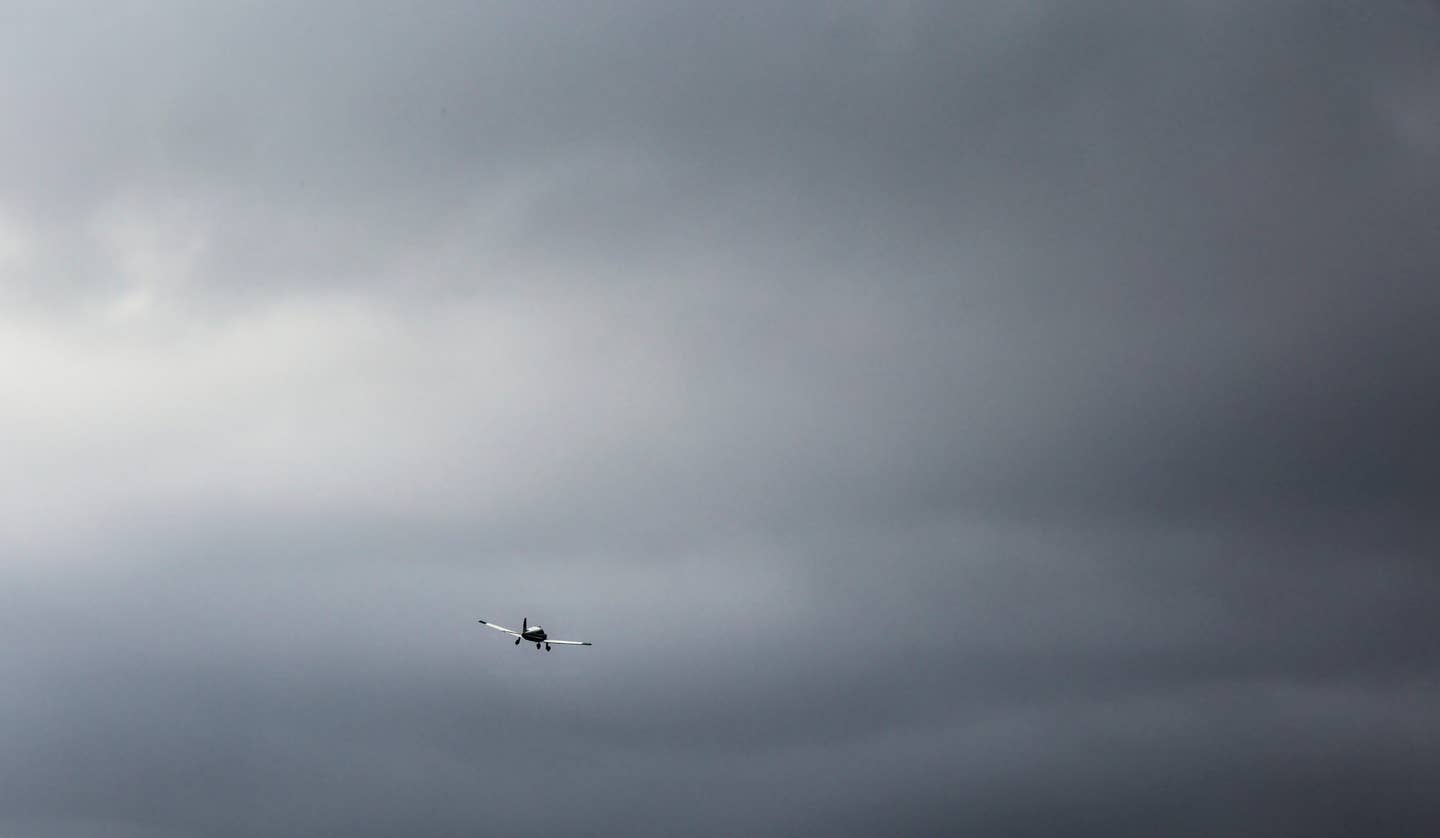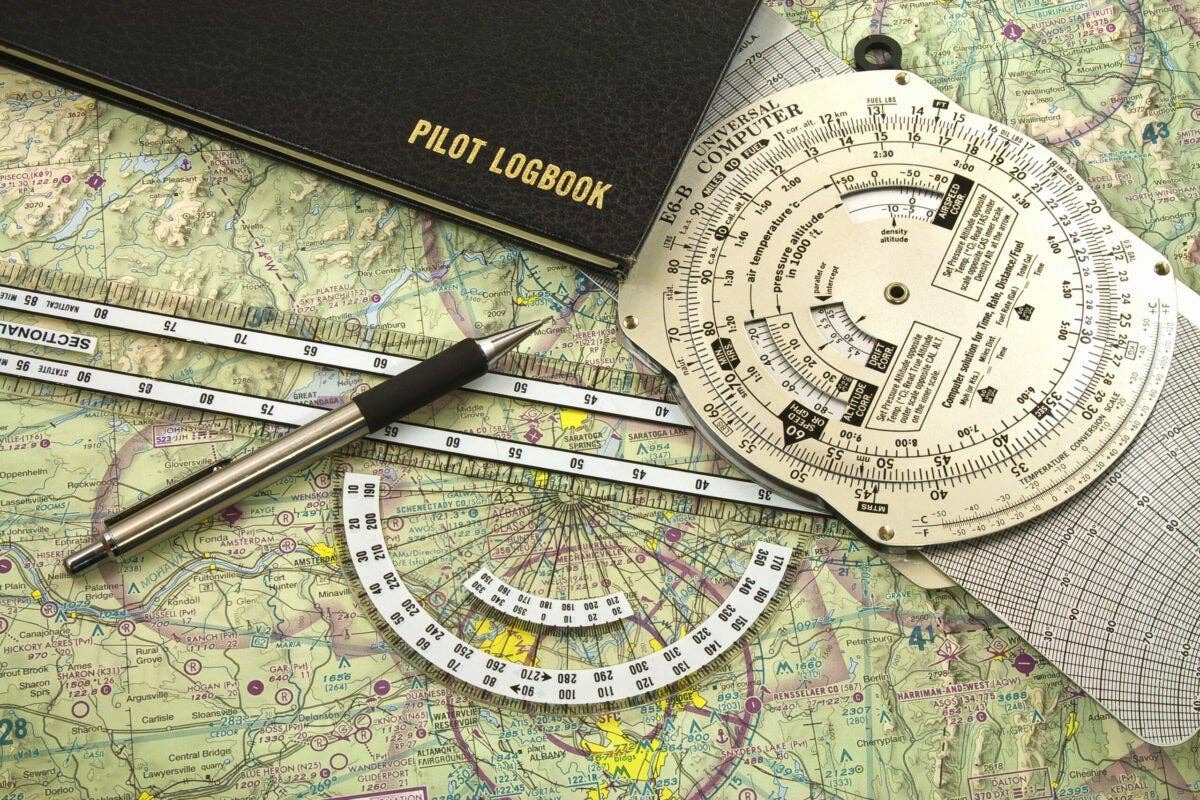A Cautionary Tale About Pilot Freelancing
Fatal Saratoga accident shows that some destinations aren’t worth making.

One of the essential arrows in every pilot’s quiver should be knowing when to quit. [Adobe Stock]
In late June 2020, a 40-year-old oil industry entrepreneur and executive left David Wayne Hooks Memorial (KDWH) near Houston alone in his Saratoga. Helped by a tailwind, he arrived over his destination—a private strip 90 miles to the northeast—36 minutes later.
It was about 1 o’clock in the morning. The air on the surface was warm and humid. If he checked the weather—there was no evidence that he did—he would have expected to find widespread but patchy cloudiness over the route of flight and at the destination. In some places clouds were broken or scattered with tops at 3,000. Elsewhere buildups climbed into the flight levels. Ceilings and visibilities under the clouds were good, at worst 700 feet and 5 miles. The temperature and the dew point were only 3 degrees apart, however, and there was a slightly increased risk of fog formation owing to, of all things, particulate pollution from dust blown in from the Sahara.
If you're not already a subscriber, what are you waiting for? Subscribe today to get the issue as soon as it is released in either Print or Digital formats.
Subscribe NowDuring the short flight, he climbed to 3,600 feet, probably to get above some cloud tops. It was pitch-dark as the crescent moon was far below the horizon. As he neared his destination he descended to 1,500 msl, 1,300 feet above the terrain, and reduced his groundspeed from 175 knots to 100 knots.
The airstrip at which he intended to land was 3,500 feet long, 40 feet wide, and had a light gray concrete surface oriented 4/22. Other than a hangar on an apron at midfield, there were no structures on the airport and no edge lights along the runway.
The only lights were red ones marking the runway ends. The surrounding area was largely dark. Sam Rayburn Reservoir sat close by to the north and east, a vast region of uninterrupted black. Parallel to the runway, about half a mile north, was State Highway 147, lighted only by the headlamps of infrequently passing cars.
- READ MORE: Two Fatal Cases of the Simply Inexperienced
For almost an hour, the pilot flew back and forth over the airstrip, tracing a tangled path of seemingly random right and left turns. His altitude varied between 350 and 1,100 feet agl and his groundspeed between 65 and 143 knots. His ground track, as recorded by ATC radar, suggested no systematic plan, but it was broadly centered on the northeast end of the runway.
The last return from the Saratoga, recorded 54 minutes after it arrived over the field, put it 9,700 feet from the northeast end of the runway on a close-in extended left downwind leg for Runway 22 at a height of 350 feet agl and a groundspeed of 94 knots. The Saratoga was below radar for the remainder of the flight.
Its burned wreckage was found at the southern edge of the clear-cut area surrounding the runway, several hundred feet short of the threshold. A trail of parts led back across the clear-cut to its north side, where the airplane had clipped a treetop at the edge of the woods. From the orientation of the wreckage path, it appeared that the Saratoga may have overshot the centerline on base and was correcting back toward the approach end lights when it struck the tree.
In the course of the accident investigation, it emerged that the airplane was out of annual, its last inspection having occurred in 2017, the registration had expired, and the pilot’s medical was out of date. The pilot had 400 hours (estimated) but did not have an instrument rating and, in fact, had only a student certificate. The autopsy turned up residues of amphetamine, methamphetamine, and THC (the psychoactive component of cannabis), but investigators did not rule out the possibility that the drugs could have had a therapeutic purpose.
The National Transportation Safety Board’s report on the accident declines to speculate on whether the drugs impaired the pilot in any way. In fact, the NTSB report concedes that “the pilot’s aircraft handling was not deficient relative to his limited experience of flying in night instrument conditions and the prolonged period of approach attempts.” The finding of probable cause cited only the pilot’s “poor decision-making as he attempted to land at an unlit airstrip in night instrument conditions.”
The pilot bought the Saratoga in 2016 and then took flying lessons, but he stopped short of getting the private certificate. His instructor said he had never given him any instrument training. The pilot’s wife said that he “normally” flew to the airport at night and circled down until he could see the runway.
The airport was in Class G airspace. What the cloud conditions were we don’t know—the nearest automated reporting station was 24 nm away—and so we don’t know whether the Saratoga was ever in clouds and, if so, for how long. Maneuvering around at low level for nearly an hour in darkness and intermittent IMC would be taxing even for many instrument-rated pilots, and so it seems likely that if the pilot was in clouds at all, it was only for brief periods.
Two things strike me about this accident. First, how close it came to not happening: If the pilot hadn’t clipped the tree, he might have made the turn to the runway successfully and landed without incident, as he apparently had done in the past. Second, that he had ever managed the trick at all. I can only suppose that the contrast between the runway clear-cut and the surrounding forest was discernible when there was moonlight and that he was able to use GPS and the runway’s end lights to get himself to a position where his landing light would illuminate the runway.
Rugged individualism being, supposedly, an American virtue, I leave it to you to applaud or deplore the nonconformist aspects of this pilot’s actions. Perhaps a certain amount of freelancing is inevitable in an activity like flying. But I deprecate his persistence. One of the essential arrows in every pilot’s quiver should be knowing when to quit. He set himself a nearly impossible goal, and after flying half an hour to his destination, he spent an hour trying to figure out how to get onto the ground.
If it was that difficult, it wasn’t worth doing. There were other airports—with runway lights—nearby.
At the time of the crash, the pilot was awaiting the decision of a Houston court in a wrongful termination lawsuit that he had filed against a former employer. Five months later, the court found in his favor to the tune of $143 million. Thanks to a terminal case of “get-homeitis,” however, he wasn’t there to enjoy it.
Note: This article is based on the National Transportation Safety Board’s report of the accident and is intended to bring the issues raised to our readers’ attention. It is not intended to judge or reach any definitive conclusions about the ability or capacity of any person, living or dead, or any aircraft or accessory.
This column first appeared in the May 2024/Issue 948 of FLYING’s print edition.

Sign-up for newsletters & special offers!
Get the latest FLYING stories & special offers delivered directly to your inbox



